Today we have a guest post from SWE member Jan Crocker, CSW. Jan earned her Certified Specialist of Wine (CSW) certification in 2016 and is currently studying for the Certified Specialist of Spirts (CSS). Wish her luck!
Now entering its early adolescence as the United States’ 162nd American Viticultural Area (AVA), the Ramona Valley AVA continues to evolve. Not unlike a resilient young teen, though, the region has stared down a few challenges over the last couple of years, and made further progress in its growth.
In my first piece three years ago about the Ramona Valley, I’d mentioned that my husband and I had visited the region four times. Fast forward to fall 2019: We’ve now spent eight outings there, discovering new wineries, returning to those that are “old friends,” and taking in the wild beauty of its distinctive natural landscape.
Before Ramona Redux, however, here’s Ramona Recap: a primer of the region for anyone unfamiliar with it.
The third AVA in the South Coast “super AVA,” the Ramona Valley is in north-central San Diego County, attaining its designation in January 2006. At 33.1 north, it’s 25 miles west of the Pacific Ocean and roughly 35 miles northeast of San Diego. Its altitude – an average of 1,400 feet above sea level – provides for solid diurnal swings; wine grapes benefit from its chilly nighttime lows and toasty mid-day highs. Neighbor community Julian, home to several apple orchards, crisp autumns, and chilly winters with occasional snow, is 22 miles east of Ramona, and is 4,200 feet above sea level.
Granite, decomposed and rocks alike, is a trademark of Ramona terroir. Its tiny particles provide a subtle sparkle in the soil, and its boulders make their presence known on the likes of nearby 2,800-foot Mount Woodson and on the region’s numerous hills. The proprietors of Vineyard Grant James made that granite part of their winery’s identity, opting to showcase it for their entrance.
The AVA sits among the region’s neighboring mountains and hills, with Mount Woodson, the Cuyamaca Mountains, and Mount Palomar providing a rain shadow from ocean fog and chill. It’s home to a 14 ½-mile stretch of terrain with 89,000 arable acres over 139 square miles – and, according to the proprietors of Barrel 1 Winery and Poppaea Vineyard, “at least 11 different microclimates.”
On average, annual Ramona rainfall reaches a modest 16 inches. Winter evenings often drop into the low 30s, while the mercury often touches the low-to-mid nineties on summer days. (We’ll return to a historically high temperature that’ll likely remain for years in winegrowers’ and winemakers’ memories.)
Southern California’s “soft chaparral,” with ample quantities of sage and rosemary, is the story of Ramona’s flora – on display at the entrance to Woof ‘n Rose Winery. Indeed, those herbs find their way into nearly all of the 41 wines we’d sampled during our most recent stay. It’s little wonder that the components of Ramona’s semi-arid, rather warm Mediterranean climate make it an ideal home for robust, sun-loving grapes from the Rhone Valley and the southern half of Italy – as well as other, equally hardy varietals that prosper from good amounts of sunshine, heat, and breeze.
As for the toasty: The Ramona Valley sizzled in the early summer of 2017, with a 102-degree high the second week of July. (Anza-Borrego State Park, nearly 45 miles east of Ramona, reached 124 degrees that day.) About three weeks earlier, Ramona endured days of devastating heat, with one afternoon at 98. These days highlighted one of the toughest climactic challenges that local winegrowers had faced in years, as one winery lost its entire ’17 harvest. Another, according to Ramona Ranch Vineyards‘ co-owner Teri Kerns, “lost half of its grapes that year.”
Despite its recent challenges, the Ramona Valley AVA has made solid, significant growth since 2016. The region is now home to at least 60 bonded wineries, 22 with tasting rooms. Three new wineries have debuted since 2015: Barrel 1 Winery, Crystal Hill Vineyard, and Correcaminos Vineyard.
Two more concerns, albeit considerably lesser ones, surfaced in the Ramona Valley in fall 2019. On Oct. 28, the Sawday Fire torched 95 acres of terrain between Ramona and Julian; to the relief of the area’s residents and wineries, the flames stayed far from structures and vines alike. No matter: The area’as winery owners and staffers were on stand-by mode that day, ready to vacate their premises if necessary.
A day later, Ramona Ranch Vineyards’ co-owner/winemaker Micole Moore expressed his concern in his Oct. 29 post on Facebook. “Earthquake!” he posted regarding the shallow 3.6-magnitude that rattled Ramona that morning, its epicenter 27 miles northeast at Lake Henshaw.
Obviously, wildfires and quakes are part of southern California life. Still, to have two of Mother Nature’s trademark events of the state occur in as many days left Ramona, for a lack of a better phrase, a bit shaky.
Barrel 1, in the middle of Ramona’s Goose Valley, benefits from some of the region’s most moderated temperatures. “We’re in a valley, in a valley,” mentioned one of the winery’s directors. “That’s why it’s about 10 degrees cooler here than anywhere else.” To that point, Barrel 1 features three white wines in its regular tasting lineup: an opulent, intensely perfumed, luscious Muscat that undergoes complete fermentation, a Viognier aged in stainless steel, and another Viognier that’s matured in neutral oak – a deep-gold beauty that offers rich layers of tropical fruits, peach, tangerine, and honey.
The ascent of sun-friendly white varietals in the region, Ramona Ranch Vineyards’ Kerns pointed out, is the happy by-product of the recent success of the area’s wineries. She mentioned that the main obstacle for making white wines was the price tag of cold-fermentation machines, a formidable $100,000. With enough money saved over the years, winery owners were at last able to produce white grapes that took easily to the region’s terroir. Her “Burlesque” blend is ample proof of Ramona’s promise with whites, a vibrant, fragrant blend of Sauvignon Blanc, Muscat, and Symphony, a crossing of vinifera varieties Muscat of Alexandria and Grenache gris. The winery’s single-varietal Sauvignon Blanc struts its elegant acidity with help from the sturdy granite; it’s a beauty that’d likely impress fans of Bordeaux blanc – and it’s a personal favorite of mine.
In the Grasslands region, proprietor/winemaker Mike Kopp of Kohill Winery follows suit with his estate Sauvignon Blanc. Lemongrass, lime, white pepper, and a hint of sea salt offer a bright counterpoint to the subtly rich Semillon, 25 percent of his nuanced white Bordeaux.
Other Ramona Valley AVA wineries have found surprising success with varietals that’d initially seem to be ill suited for the hot summers and sturdy winds characteristic of the area. Veteran winemaker/proprietor Eric Metz of Lenora Winery, home of focused, bright reds and whites, crafts a fresh, flinty, and citrusy Chardonnay that’d delight fans of Burgundian whites, especially Chablis. Likewise, Vineyard Grant James’ Susanne Sapier’s Chardonnay is similarly vibrant and zesty, with limited aging in neutral oak.
Likewise, Albarino has found an excellent, albeit unlikely, home in Ramona. Renderings here lead the way with heady scents and flavors of peach, navel orange, tangerine, pineapple, mango, and passionfruit, with subtle acidity and minerality that bring the ripe flavors front and center. Marilyn Kahle, co-owner and winemaker at Woof ‘n Rose Winery, makes sure her compelling, complex Grasslands Albarino is varietally on point, although the valley’s warm climate and abundant sunshine provide for a different style that’s decidedly different from those from Rias Biaxas’ cool maritime climes. (On the red side of the story, she makes a gorgeous, opulent Alicante Bouschet that provides deep, succulent red and black fruits, baking spices, and a finish that’s long and astounding.)
As with our first extended trip to Ramona in August 2016, Lady Nature was surprisingly kind to us, with afternoons barely reaching 90 degrees Fahrenheit. Many late Septembers in the area deliver afternoons in the mid-90s, so wine fans opt for cool shade under the covered patios which nearly all wineries provide. Woof ‘n Rose, Ramona Ranch Vineyards, and Vineyard Grant James offered us that comfort, as well as stunning views of the region’s terroir.
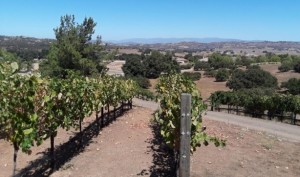
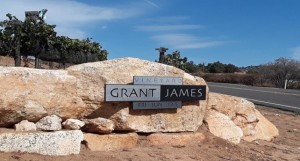
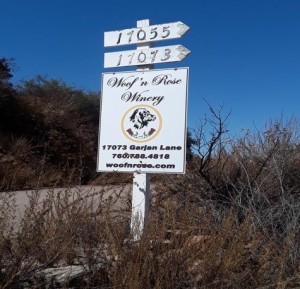
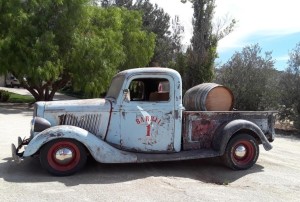
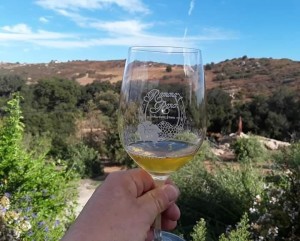

Yay Jan!! Great SWE blog post!!